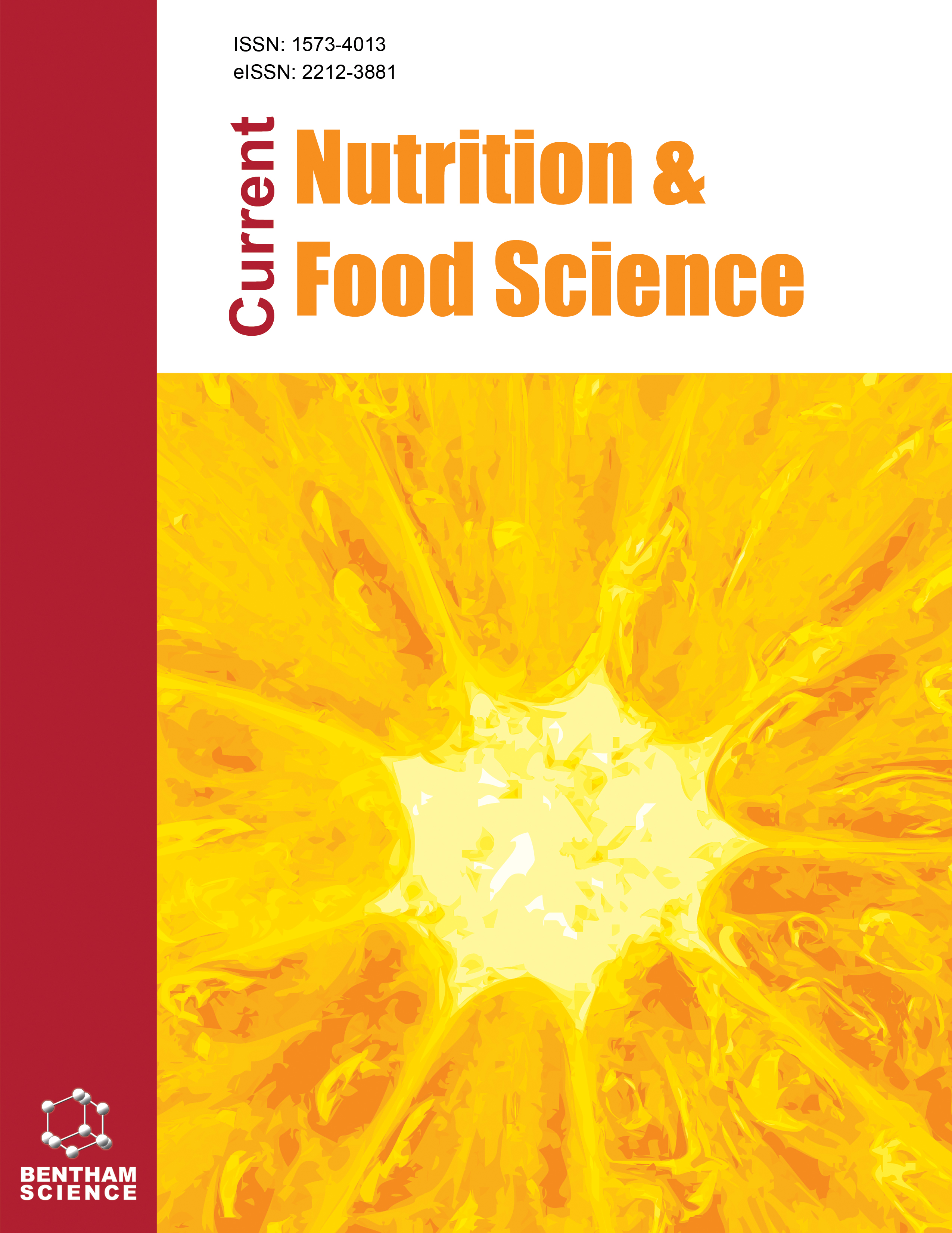- Home
- A-Z Publications
- Current Nutrition & Food Science
- Previous Issues
- Volume 9, Issue 2, 2013
Current Nutrition & Food Science - Volume 9, Issue 2, 2013
Volume 9, Issue 2, 2013
-
-
Regulation of Intestinal Barrier Function by Dietary Polyphenols
More LessA high dietary intake of fruits and vegetables is associated with a reduced disease risk. The fruits and vegetables contain fibers, vitamins, phytosterols, sulfur compounds, carotenoids, and organic acids, which all provide beneficial effects on health, but they also contain a variety of polyphenols. Recently, polyphenols have received considerable attention because of their various physiological effects, including anti-oxi Read More
-
-
-
Effects of Short Chain Fatty Acids on the Intestinal Barrier
More LessBy Jing LinPostnatal maturation of the intestinal barrier occurs coincident with increasing enteral feeding. Normal intestinal bacterial colonization is established once enteral feeding is achieved. Colonization of intestinal microflora plays a vital role in the regulation and maintenance of intestinal barrier function. As the important end products of intestinal microbial fermentation of mainly undigested dietary carbohydrates in the in Read More
-
-
-
Protection and Restitution of Gut Barrier by Probiotics: Nutritional and Clinical Implications
More LessAuthors: Radha Krishna Rao and Geetha SamakProbiotics are beneficial bacteria present in various dietary components and many of these colonize in the human and animal intestine. In the gut probiotics help the host by assisting in maintenance of normal mucosal homeostasis. Probiotics not only help maintain normal function of the gut mucosa, but also protect mucosa from injurious factors such as toxins, allergens and pathogens. The beneficial effect of probiotics is me Read More
-
-
-
High Fat Diet and Gut Barrier Function
More LessAuthors: A.C. van den Heijkant, M.D.P Luyer and W.A. BuurmanGut barrier integrity is important to maintain homeostasis between intraluminal contents and the sterile internal environment. Several physical and immunological mechanisms exist to support this balance. An inflammatory response may disrupt this delicate balance in the intestine and lead to intestinal barrier failure. Ingestion of dietary lipids in high concentrations has been shown to preserve intestinal barrier integrity. Several Read More
-
-
-
Processed Foods, Dysbiosis, Systemic Inflammation, and Poor Health
More LessModern Western food contains less than twenty per cent of the ingredients on which our paleolithic ancestors lived and other primates like the wild chimpanzees live today. Fresh greens, fruits, seeds, piths, bark and insects were the foods to which humans had been adapted during millions of years. A recent study found that 80% of diet of wild chimpanzee consists of ripe and unripe fruits, young leaves, flowers and fresh and d Read More
-
-
-
Physico-Chemical Changes and Stability of Nutraceutical in Rice Bran Oil During Simulated Domestic Frying
More LessAuthors: Rangaswamy Baby Latha and NasirullahSimulated frying studies were carried out by frying circular sheets of rice flour dough in rice bran oil, heated to 180±2°C. The total frying time was up to 8 hrs. At the end of every 2 hrs, the oil samples were drawn and physicochemical changes were determined. Results showed that the changes were markedly rapid in the initial phase of frying which is first the 2 hrs. The Lovibond colour values for 0 to 2 hrs were from 12.1±0.5 to Read More
-
-
-
Nutritional Attributes and Health Application of Seabuckthorn (Hippophae rhamnoides L.) - A Review
More LessAuthors: Tsering Stobdan, Girish Korekar and Ravi B. SrivastavaSeabuckthorn is a rich source of nutrients and bioactive components beneficial for human health. Fruit juice is rich in sugar, organic acids, amino acids, essential fatty acids, phytosterol, flavonoids, vitamins and mineral elements. There are 24 minerals and 18 kinds of free amino acids in seabuckthorn juice. The total quantity of phytosterol in seabuckhtorn exceeds soybean oil by 4-20 times. Seabuckthorn seed is a source Read More
-
Volumes & issues
-
Volume 21 (2025)
-
Volume 20 (2024)
-
Volume 19 (2023)
-
Volume 18 (2022)
-
Volume 17 (2021)
-
Volume 16 (2020)
-
Volume 15 (2019)
-
Volume 14 (2018)
-
Volume 13 (2017)
-
Volume 12 (2016)
-
Volume 11 (2015)
-
Volume 10 (2014)
-
Volume 9 (2013)
-
Volume 8 (2012)
-
Volume 7 (2011)
-
Volume 6 (2010)
-
Volume 5 (2009)
-
Volume 4 (2008)
-
Volume 3 (2007)
-
Volume 2 (2006)
-
Volume 1 (2005)
Most Read This Month
Article
content/journals/cnf
Journal
10
5
false
en


